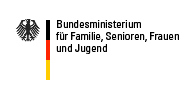Budget
Gender Budgeting as part of Gender Mainstreaming in public authority decisions with a financial impact
In the current discourse, Gender Budgeting is frequently seen as a process for systematic analysis and shaping of public budget policy with the aim of orientation to gender equality.
In this regard, all budgetary policy decisions, measures, programs and legislation and budgetary plans are assessed for their impact on the various women and men.
On the basis of the results of this analysis, the entire budgetary process is reshaped with the aim of realizing the gender equality-oriented use of resources. This includes the necessary restructuring of revenue and expenditure processes.
This focus on public budgetary policy has three reasons:
With regard to policy decisions with a financial impact, this means a budgetary policy giving due regard to gender aspects, which covers both public revenues and expenditure and economic policy legislation and measures. The gender perspective should be integrated into every phase of budget policy decision-making and into the preparation of budget plans. This should be accompanied by a change in prioritization aimed at the realization of gender equality between women and men.
With this focus on public budgetary policy, it should be borne in mind that the Budget Act and Budget Plan of each unit is already predetermined to a large extent by other decisions with financial impact (legislation, resolutions, programs, etc.). Gender-related analysis and gender equality-oriented use of resources should be done with reference to all these decisions with financial impact.
However, whether the financial impact of a new piece of legislation (e.g. concerning child care) is assessed in terms of orientation to gender equality under the heading of Gender Budgeting or using other Gender Mainstreaming means (such as impact assessment using the Federal Government’s Working Aid on Legislation) is a matter for decision within the implementation strategy of the respective political unit.
In this regard, all budgetary policy decisions, measures, programs and legislation and budgetary plans are assessed for their impact on the various women and men.
On the basis of the results of this analysis, the entire budgetary process is reshaped with the aim of realizing the gender equality-oriented use of resources. This includes the necessary restructuring of revenue and expenditure processes.
This focus on public budgetary policy has three reasons:
- It is primarily political units such as states, federal states or local communities that have undertaken to carry out the strategy of Gender Mainstreaming. Decision-making regarding finances is a crucial means of political control in these units and must therefore be integrated into a comprehensive strategy of gender equality.
- Public budgets have considerable weight for the overall economy and significant impact on the framework conditions for individual decisions. They must absolutely therefore be integrated into a Gender Mainstreaming strategy in economic policy.
- Public expenditure and revenues are more easily accessible to political design than the financial flows of money in the private economy.
With regard to policy decisions with a financial impact, this means a budgetary policy giving due regard to gender aspects, which covers both public revenues and expenditure and economic policy legislation and measures. The gender perspective should be integrated into every phase of budget policy decision-making and into the preparation of budget plans. This should be accompanied by a change in prioritization aimed at the realization of gender equality between women and men.
With this focus on public budgetary policy, it should be borne in mind that the Budget Act and Budget Plan of each unit is already predetermined to a large extent by other decisions with financial impact (legislation, resolutions, programs, etc.). Gender-related analysis and gender equality-oriented use of resources should be done with reference to all these decisions with financial impact.
However, whether the financial impact of a new piece of legislation (e.g. concerning child care) is assessed in terms of orientation to gender equality under the heading of Gender Budgeting or using other Gender Mainstreaming means (such as impact assessment using the Federal Government’s Working Aid on Legislation) is a matter for decision within the implementation strategy of the respective political unit.
erstellt von Administrator
—
zuletzt verändert:
02.01.2010 20:07





